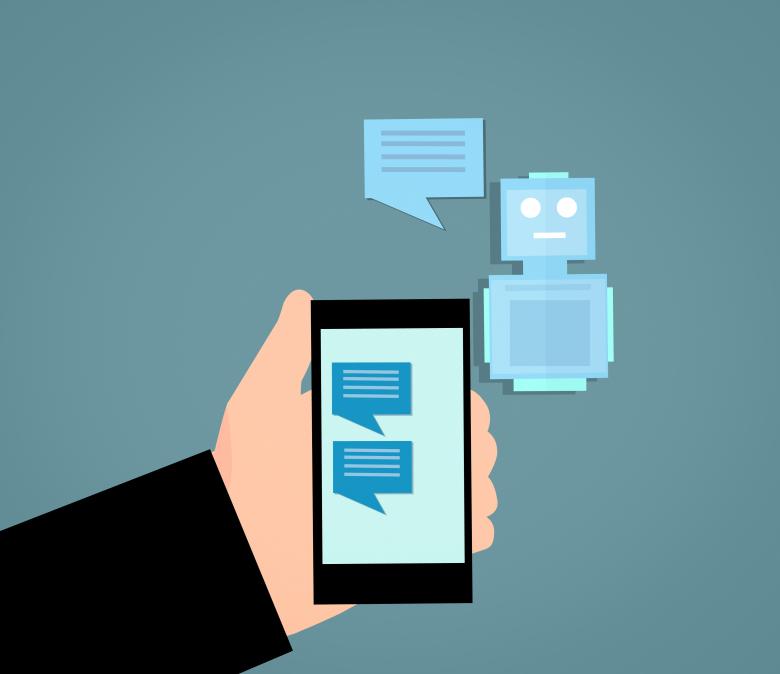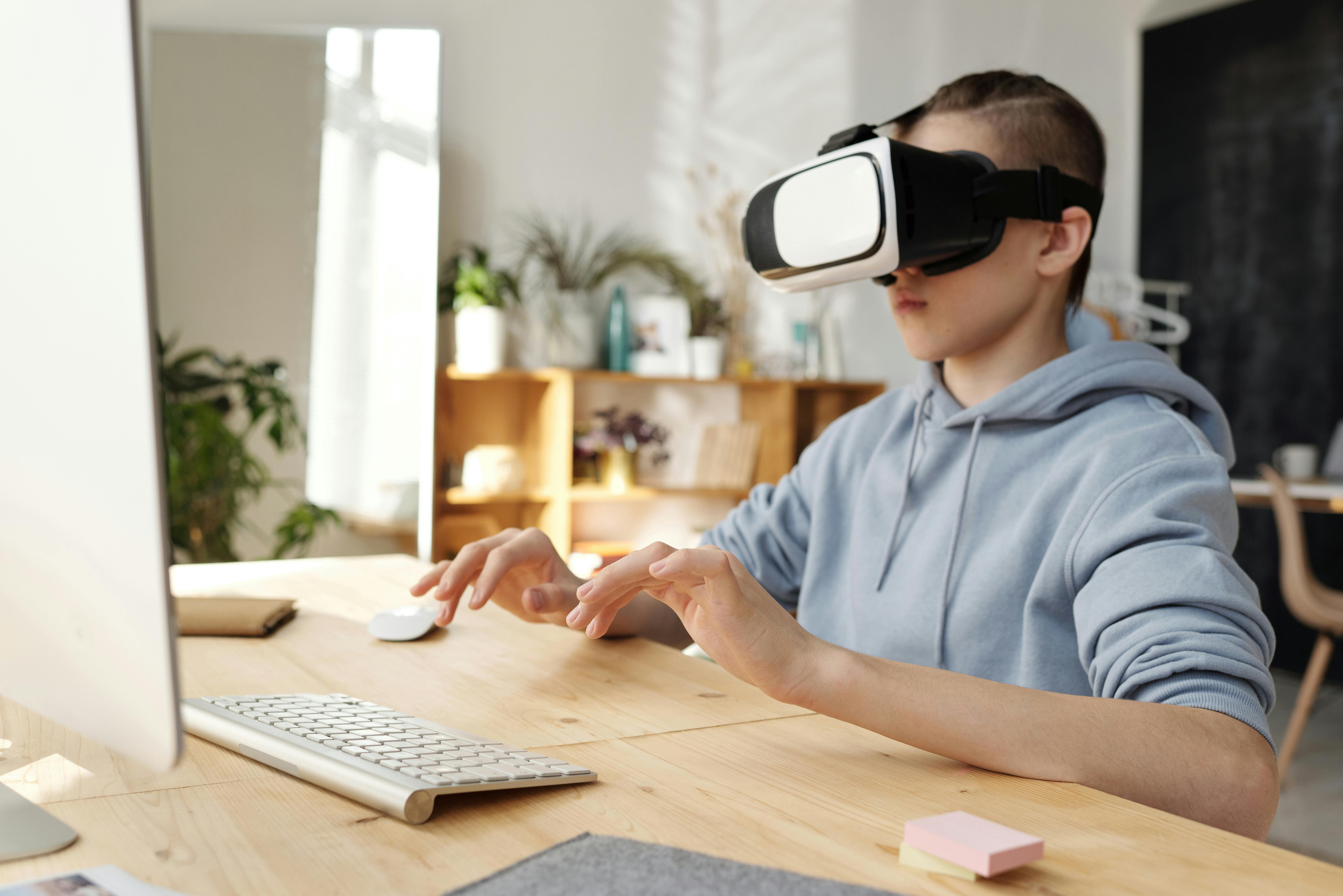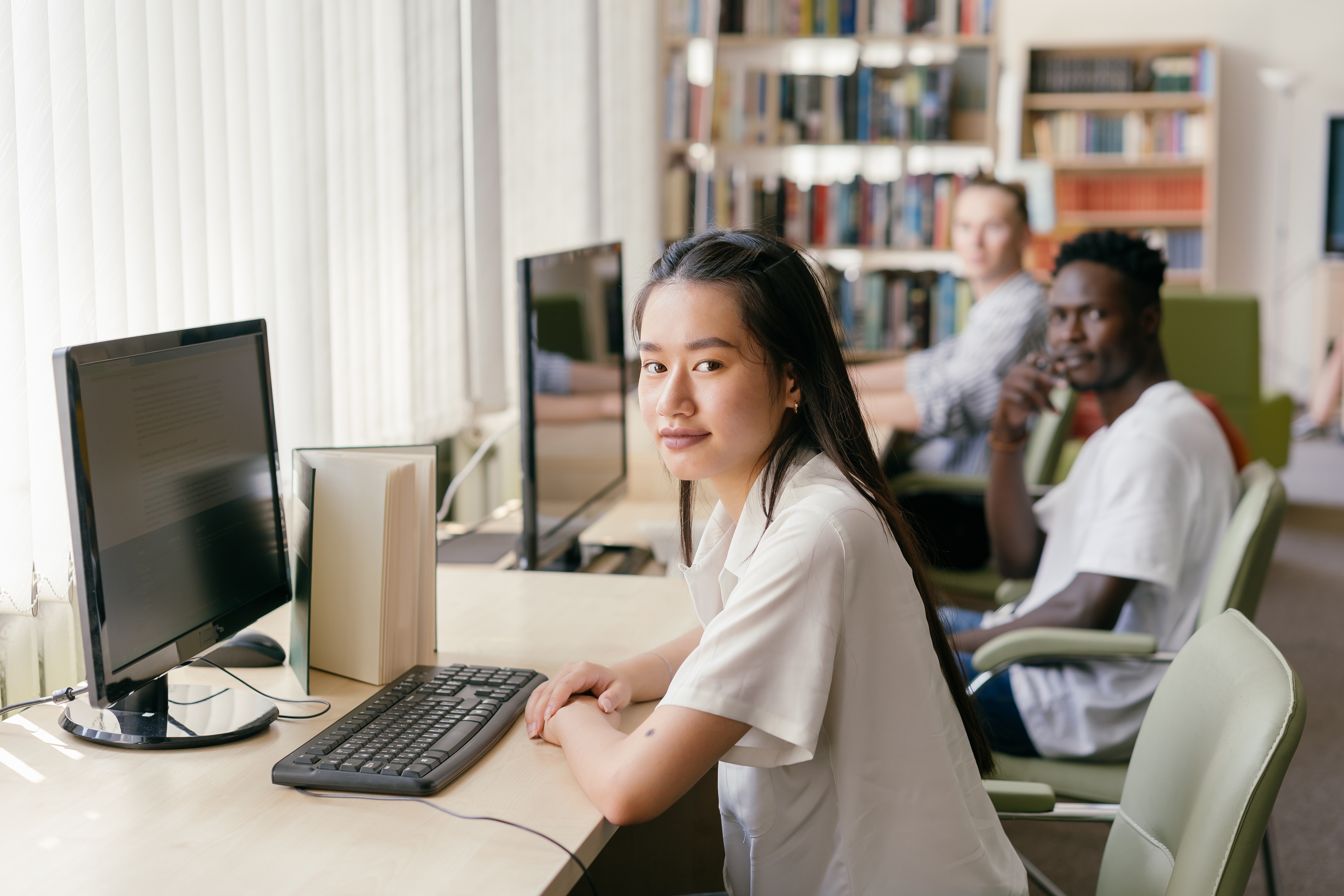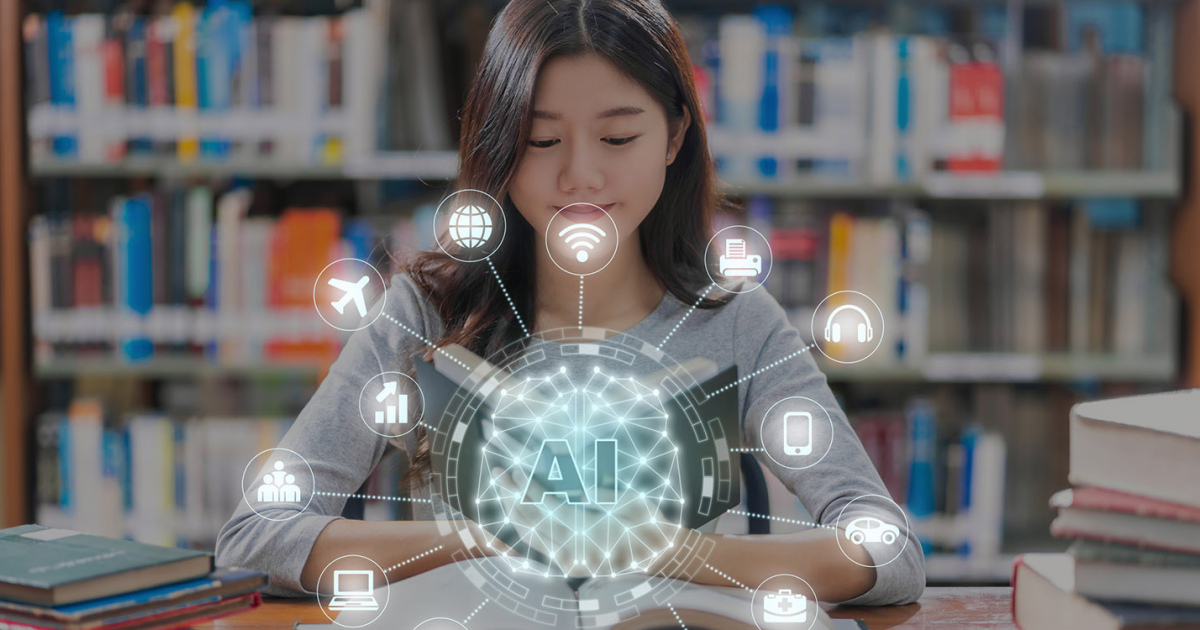Educational Technology: “AI in The Classroom: 10 Essential Ideas Every Educator Needs to Understand”

As AI begins to grow more and more it is essential to understand the fundamentals of the new tool and how its application in the classroom can aid not only educators but students as well. In breaking down the ten rudimentary areas of AI and its impact it becomes much easier to digest. The ten being;
- Human Trained AI vs Deep Learning Models
- The True Power in Student – AI Collaboration
- The Impact AI Can Have on Learning Differences
- The Role of Coded Bias
- The Job Market Impact
- The Importance of Improving prompting Skills
- How to Enhance Pedagogy with ChatGPT
- AI is More Than a Worksheet or Presentation Generator
- How to Use AI to develop Critical Thinking in Students
- Soon, It will be a common assumption that all written pieces involved the use of AI
Everyone of the concepts open up the conversation for what AI use will become in the near future. They provide key examples of how students will be able to work with AI to complete assignments, or how as educators we will be able to turn to AI to generate resources for lesson plans, projects, and more. The new changes to AI that have transitioned it from the human trained AI used all over the world, have now become systems that are capable of learning from themselves. This will allow students to collaborate with a reliable source of information that may generate ideas and concepts for the best result when working on assignments. As the article states, it brings benefit to students who may have disabilities as well and due to this it will soon be included in most if not all IEP’s.
By coming to understand the ideas in this article, I was better able to visualize how as an educator I will be able to use AI in my classroom. In becoming comfortable with the resource, it will allow me to create better lesson plans and overall a better learning experience for my students. With AI generated resources, it will become a much easier way to also implement the idea of AI to students and open them up to other opportunities as well. The main focus will be on prompting the AI systems in order to retain the most accurate information. After reading the article, I now see the importance of including AI activities and allowing students to familiarize themselves with a tool such as AI.
Original Article: https://www.hollyclark.org/2023/09/13/10-things-all-educators-should-understand-about-ai-in-the-classroom/?utm_medium=social&utm_source=twitter
Enhancing Education with Technology
With technology being more accessible than ever, it has rapidly made its way into the educational world and is providing educators with tools to enhance their classrooms and producing exceptional learning and collaborative experiences. These tools can help educators accommodate for their students and help all different types of learners achieve their full potential.
Types of Technological Tools
The article if found, discusses the various types of innovative technological tools educators can utilize to teach lessons and how it creates a collaborative community within the classroom. Some of the tools educators can utilize are interactive displays, 3D printing, and audio systems.

How these Tools are Beneficial
Interactive displays allow for students to visualize concepts easier and is a more fun and interesting way teachers can introduce more challenge material. 3D printing tools help create tangible creations that utilize engineering and critical thinking skills. Lastly, audio systems can be an accommodation for students who might have an audible disability, but also tools like microphones can be used to read aloud to the entire class.
Overall, these technological tools, and many more, and all very beneficial for the enhancement and sense of community within classrooms. The future of education will be bright by utilizing these technological tools.
Will Virtual Reality Replace the Old School Module of Classrooms?
Written proficiently well by author Emma Green, Virtual-Reality School Is the Next Frontier of the School-Choice Movement details the newest approach to technology with the classroom itself. This idea is to take the online format created during the overall global pandemic and enhance it. While we have in the past used VR to overall enhance the classroom by integrating with in person lessons, the idea is to now take it to the students’ homes to get rid of the old school module of schooling. Now you may wonder how this will benefit the student educational, but you must see how it also promotes economical and community involvement.
Student Education

- The State of Florida has already integrated this concept with their school-choice system showing a vast improvement to the learning and education of the student.
- Many classes within Optima are synchronous allowing the group classroom setting that many are familiar with to not deter families to think the student is learning on their own while providing a vast amount of different classes.
- The afternoon classes are purely asynchronous to allow students to gain self-paced knowledge to enhance on portions needed to be looked at by the student more and promote outside interests and family time.
- The ability to connect globally to other students allows an engagement of global communication that many would not be able to have due to restrictions of social media and approachability.
Economical and Communal Involvement
- Families will see the payment of Optima Ed through their taxes similarly to school taxes for public schooling.
- This allows an excess of money to occur through the limiting of transportation for the student
- The ability to not purchase extra clothing for uniforms throughout the school year.
- Promotes allocations to enhance activities for students to try new hobbies and interests that the student may not have been previously able to do.
Overall global integration of VR as the overall new way of school will indeed take time. Many obstacles will be faced with the overall providence of internet and technology to those in lower world countries. However, it has been undoubtedly noted the positives this type of learning can have on a student and the possibilities the learning could go. However, what do you think? Do you see this overall taking overall the style of teaching as a whole? Please feel free to let me know in the comments!
Follow me on X to see any future updates and other interesting topics @randyrn55
Technology Post Pandemic
The following post is related to content from the article Today’s Kids Are Inundated With Tech. When Does It Help — and Hurt? by Jeffrey R. Young. From a personal standpoint, I completely avoided being in school during the shutdown by pure coincidence. I graduated high school in 2018 and returned to Stockton in the fall semester of 2021 – right as in person classes started back up. Despite this, I still feel as though the effects of the pandemic on education can be felt. In the simplest of ways it was wearing masks to classes for the first two semesters and further it is the sharp increase of technology required to participate in class assignments. Some of the increase in tech can be attributed to the natural development of now five years passing, but it is impossible to deny that the pandemic catapulted reliance on technology.
The article linked above is part of a podcast, EdSurge, and calls upon an interview with Katie Davis. Davis is an Associate Professor at the University of Washington with 20 years of child development research under her belt. More recently that research has found itself focusing on the appropriate use of technology throughout different age groups. Her book detailing this information in depth can be purchased through Amazon here: Technology’s Child by Katie Davis.

Davis refers to the technology features that have adverse real world effects as “dark patterns”. These patterns are things that we can become familiar with and forget to question their role in children’s lives. One such pattern discussed in the interview, and subsequent article relating, is the autoplay feature on YouTube; with constant access to content with minimal effort it can be hard for a child’s mind to draw a line of when enough is enough. Even with adults, people can get sucked into rabbit holes of information and end up realizing they have spent hours consuming content mindlessly (we see this with TikTok often). Routing back to younger age groups, it is harder for them to separate the fifth video in a row from the video they started with creating difficulty around convincing the child to remove themselves from the device(s).

The above image is one that likely feels familiar to anyone looking at it, classrooms like this exist all over Stockton’s campus – students facing a screen while the professor stands behind a screen working a projector – but there are still even more technology reliant set ups; such as computer labs. In many ways this form of using technology can be very useful. For example, being able to present typed instructions takes away the need for legible hand writings and offers the option to increase font size at any given time if the need presents itself. There are also downsides such as the lack of professor to student connection, standing at the front behind a podium there is an inherent disconnect between the two. This duality is the main focus of both Davis’ research and this particular article by Young. Technology is a skill that is necessary to have in today’s world, but there is a balance that must be found to be able to use these resources for good without inflicting harm in the classroom. Students still need to know how to use a pen and pencil, how to write, how to interact face-to-face with other people, and these are things that technology simply cannot do. This is an ever evolving problem that is undoubtedly going to see a lot of regression along with the progress but watching it all unfold as we prepare to enter the classroom ourselves is an exciting and daunting task.
Follow this link for a webinar on AI in education 9/19/2023: AI Webinar
Building Blocks Relationship with Educational Technology

In this article, The Nature and Building Blocks of Educational Technology Research, a focus on researching the ways in which technology may support and improve educational processes is discussed. Using a wide range of topics and approaches a relationship is found to be made between how educational technology can connect into this physical activity.
Interdisciplinary Nature
When using building blocks for academic purposes such as counting, hand-eye coordination, and more it is a powerful tool for students to get a basic understanding of their educational journey. The patience and disciple that a child faces when using the blocks fuels the research that can be examined closely. This enhances both the learning and teaching processes.
Research Methods
| Controlled Studies | Controlled studies are carried out by researchers to determine how certain technologies affect learning outcomes. Pre- and post-testing are common in these research, and randomized control groups may be used. |
| Subjective Research | To learn more about how educators, students, and other stakeholders view technology integration, qualitative approaches including interviews, questionnaires, and observations are employed. |
| Methodology Research | To fully comprehend the study objectives, many studies on educational technology mix quantitative and qualitative methods. |
| Iterative Design | This strategy emphasizes the iterative design and evaluation of educational innovations in real-world learning settings. |
A broad area called educational technology research examines how technology might improve teaching and learning. It uses a range of research techniques to look into its objectives and goals. Its building components include technological tools, instructional tactics, learning theories, evaluation methodologies, and ethical issues. The future of education in the digital age is greatly influenced by this field.
Closing
Thanks everyone! Follow me on X @Paulmsu23

Computer use for schools
By Michael Tardi in Uncategorized on September 18, 2023.
Computer use over the years
Computer usage in the class environments have greatly increased over the years. Computers are the future and will help students and teachers alike by using them. But first and foremost computers need to be seen in the hands of students at school.
- 2019-2020 45% of schools had computers for it students
- 37% of schools had computers for each grade and classroom
- 39% of computers stay in there designated locations
- 1/3 of computers given to students are carried around with them

Inequities in computer use
During the pandemic poorer students were affected the most and the inequities were greatly highlighted by it.
- Two-thirds of Americans own smartphones
- Only 61% of homes have high-speed internet on average
- Six in 10 schools with high levels in poverty passed out electronic devices to those who needed them
- During the pandemic schools distributed computers to those who didn’t have them
- 31% of teachers said that their students’ lack of access to devices and high-speed internet interfered with instruction.

Importance of computers in schools
Computer use in schools is of great importance. Not only can students learn through them if another problem like the pandemic happens. But they can access all kinds of information as well. They can research topic through articles on the internet and learn and understand more about a topic. Everyone needs access to a computer whether it be given by the schools or purchased personally.
Using FigJam For Global Collaboration and Education
With FigJam, we can now come together to learn about different topics as educators share their ideas with an online whiteboard tool. Students and teachers can use this to brainstorm ideas and collaborate with one another.
What Is The Platform?
FigJam is a brainstorming tool that makes it easy to get an entire team involved in the collaboration process. The whiteboarding tool allows you to:
- Use sticky notes and shapes to share, group thoughts, and ideas
- Use the marker to draw freehand, annotate the screen, or jot down quick notes
- React with stickers, stamps, and reactions to flag questions or up-vote ideas
What Features Are There?
There are support resources and guides that can help you get started and they are the following:
- Templates: There are numerous templates that you can choose from that are used to create story maps, flow charts, and brainstorming.
- Collaborating on Zoom: You can host virtual workshops and brainstorming sessions using Zoom. You can have open sessions to invite everyone.
- Feedback: Educators and students can connect with each other to keep conversations going and run critiques on designs.
Why Is It Important?
FigJam is essential in global collaboration and education as it is designed to discuss and share ideas with their teams. It is easy to understand and enjoyable to use. A team can get together and collaborate on projects from beginning to end. As technology is becoming more advanced everyday, this tool can be beneficial to grades K-12 as teachers and educators can show their lessons and let students engage in their learning.
Make sure to follow my twitter: @Taliana_Ayala
The Exciting New World of AI
By suazorog September 18, 2023
The education world has been introduced to the use of generative AI tools in the classrooms and has been the center of conversation for educators for the past months. Many are uncertain whether the use of generative AI is a burden in education or an exciting new tool for students and teachers to use. As technology continues to develop, AI will continue to grow, and is necessary to understand how this technology may benefit classrooms.
Classroom Advantages with AI
- Creating interactive and mentally stimulating lesson plans and activities.
- AI can help teachers and students stay up to date with the latest topics that can contribute to the class.
- Reduces workload of teachers and educators allowing, more focus on the students and their needs
The benefits of AI to students
With AI we are able to provide more support to the students individually.
- Personalize learning by tailoring it to the student’s needs.
- Providing immediate feedback to the student, offering guidance.
- The creation of programs that will help further the learning experience of the students while mentally stimulating them.

In conclusion
Education is constantly changing and as educators, it is our duty to adapt to these changes to further the learning experience and growth of the students who are also adapting to the new world of technology as well. It is exciting to see how far AI can take us.
New global data reveal education technology’s impact on learning
This post will discuss technology and how it was a lifeline in schooling during the COVID-19 pandemic. As children return to traditional classrooms, school districts must carefully consider the long-term role of technology in education.https://www.mckinsey.com/industries/education/our-insights/new-global-data-reveal-education-technologys-impact-on-learning

This was a featured image so i don’t have a link for it.
AI ChatBots : Helping Teacher With Toughest Problems.
Ethical use of AI Chatbots that helps a teacher to tackle the toughest problems.

Now a days AI chat bots has become a revolutionary tech and a talked topic among the world. It has been a blessing in one side and curse at the same time. With Ai chatbots we can gain limitless knowledge and sources in a single click for various purpose. It might be coding, writing article, gathering information or what not, ai chatbot can perform a limitless performance and can be the most powerful tool. At the meantime students are using it for cheating purpose as well. They are copying assignments without even going into it and what not.
However, ai chatbots are the power houses for the educational purpose. Mainly, the teacher can use the it for various purposes to help children. It can help a teacher to decorate the study plan. It also can help teacher to know anything that is unknown. Teacher also can set problems using ai chatbots for the exams and recheck it many times for a better quality.
Although, it can have some limitations as it is not dynamic or cannot create dynamic things, it can help a teacher to get the broad guide to the plans. In near future, ai chatbots can help teacher to detect plagarism , give suggestions about what to improve and what not. In short, a ai chatbots now a days plays important role in education to help the teachers and make the education system better. Only need is to supervise so that it can be used ethically.
To conclude, ai chat bots are friends of teachers. A teacher has so many hectic works in his/her day to day life. Moreover, it becomes tough to maintain everything sometimes. AI Chatbots help them to decorate and plan everything. It can help them to gather knowledge and also help them in every toughest problem possible.
(Grammar checked by GPT4 & Grammarly)